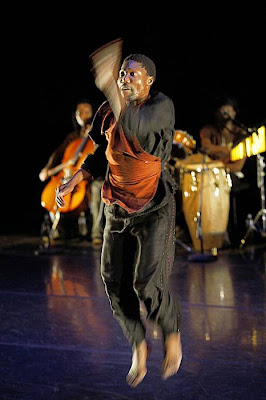
The lives they lived: new biographies of Halprin, Farber, and Kirstein
Anna Halprin: Experience as Dance
By Janice Ross. Berkeley and Los Angeles: University of California Press. 2007. 462 pp., illustrated. $34.95.
Dance Magazine, Oct, 2007
In 1959 when Hawaii and Alaska finally became states, the center of the United States shifted 464 miles toward the Pacific. With the arrival of Janice Ross' beautifully researched biography, Anna Halprin: Experience as Dance, it's time for modern dance to do the same: give the midpoint of the avant-garde dance continent a big shove westward.
With a tone of persuasive poise, Ross builds a strong case for Anna Halprin as one of the most potent if underrecognized catalysts in dance since the '50s. It's an influence that is more often felt than noted. In part that's because Halprin has done most of her work north of San Francisco in outdoor spaces, like her famous "dance deck" at her home on Mt. Tamalpais. But it's also the result of the fact that Halprin is an artist of context and process, not product.
Three forces helped to shape the young dancer. First came educator Margaret H'Doubler who, at the University of Wisconsin where Halprin studied, established kinesiology as the foundation for discovering and developing movement. Next were the artists of the Bauhaus in exile at Harvard University's School of Design. They infused Halprin and her husband, Lawrence, the renowned landscape architect, with a love of modernism's functional promise and a hunger for new egalitarian paradigms for life and art. Finally, there's Larry Halprin himself, who participated with his wife in forging an existence in which art and family intertwined.
While Halprin has only a few works in her oeuvre that are regarded as masterworks (Parades and Changes, most notably, is one), her genius, Ross suggests, lies in her ability to absorb social and intellectual experimentation and transform them into dance ideas. In the '60s she took her works to the East Coast and shook up tradition with nudity and Gestalt process. In the '70s she began to explore ritual. In the '80s and '90s, she pioneered movement for healing, dances for the earth, and dances for dying.
For decades, Halprin has sown seeds of change and enlarged the boundaries of dance. In the early 1960s, she introduced some of the soon-to-be Judson Dance Theater innovators (Yvonne Rainer, Trisha Brown, Simone Forti) to improvisation, task movement, environmental dance, and freewheeling organic exploration of body states. And thanks to her defiance of the status quo, dance today includes movement previously not considered dance and people previously not considered dancers.--Ann Murphy
